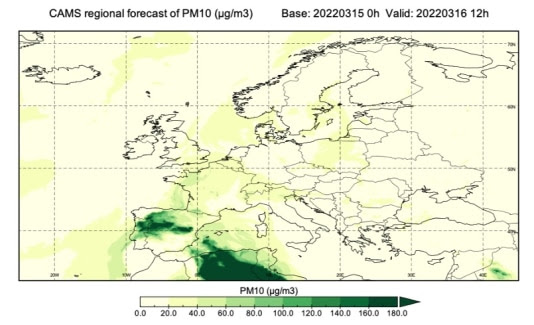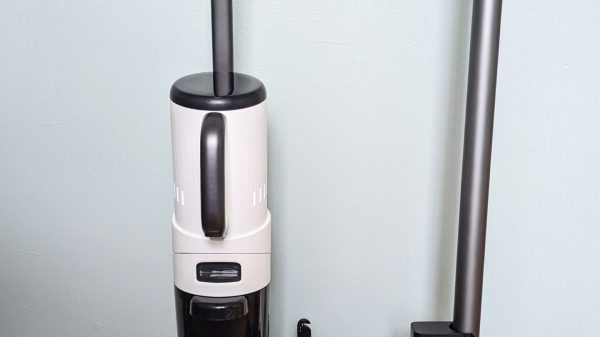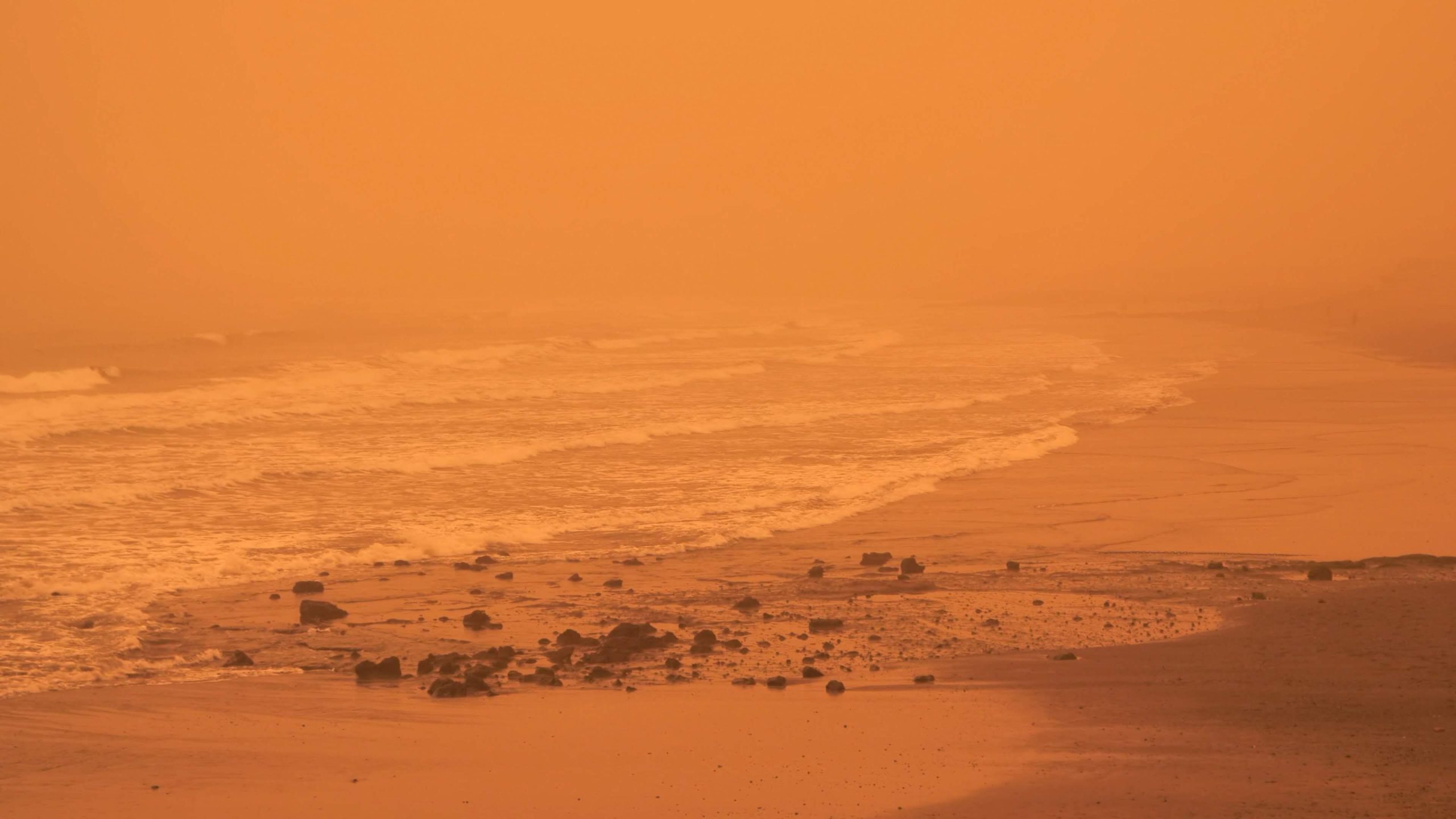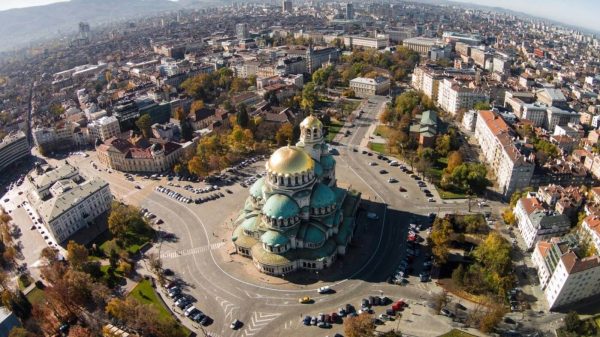Aerosol forecasts from the Copernicus Atmosphere Monitoring Service show a large quantity of Saharan dust moving northwards across Europe over the next few days. CAMS continues to monitor the Saharan dust transport following recent forecasts that showed the highest values over western Europe between 15 and 17 March 2022. The CAMS forecasts also show degraded air quality across large parts of Spain, Portugal and France related to the Saharan dust transport.
Copernicus Atmosphere Monitoring Service (CAMS) forecasts since 11 March have been showing a large plume of dust with very high values of aerosol optical depth (AOD) and dust concentrations travelling northwards across the Iberian Peninsula, France and central regions of Europe between 15 and 17 March. The trajectory of this dust plume has resulted in very high predicted surface concentrations of PM10 up to 250 micrograms per cubic metre, although European Environment Agency measurements have been showing values in excess of this at many sites across Spain on 15 March. This is greater than the EU recommended 24-hour mean threshold of 50 micrograms per cubic centimetre.
 |
| CAMS regional forecast of surface PM10 concentration for 16 March 12h UTCCredit: Copernicus Atmosphere Monitoring Service/ECMWF. |
CAMS tracks all stages of dust transport from the Sahara Desert every year and has been monitoring the annual dust transport, from different source regions across the desert, since the beginning of the year. CAMS forecasts are provided at both the European and global scale, and serve as a tool to help citizens, businesses, and policymakers make informed decisions on a continuous basis with 24/7 air quality forecast data. Air quality is recognised as being vital to human health as high concentrations of dust can have health impacts on the respiratory systems of all people in the affected regions and add to particulate matter air pollution from local sources. Senior Scientist, Mark Parrington, at the ECMWF Copernicus Atmosphere Monitoring Service comments: “In CAMS we use satellite and in situ observations in our air quality forecasts to be able to provide a continual and reliable source of information for monitoring air pollution events such as this. Long-range transport events such as this occur most years and the impacts of the current event is quite striking. While the dust will affect air quality in parts of southwest Europe, the larger scale impacts will be hazy skies or some surface deposition.” You can find more information on the CAMS monitoring of this year’s Saharan dust season here: https://atmosphere.copernicus.eu/saharan-dust-heads-north-cams-tracks-its-progress-nfAdditional air quality data can be found in the Atmospheric Data Store (ADS):https://ads.atmosphere.copernicus.eu/cdsapp#!/dataset/cams-global-atmospheric-composition-forecasts?tab=overviewandhttps://ads.atmosphere.copernicus.eu/cdsapp#!/dataset/cams-europe-air-quality-forecasts?tab=overview
Advertisement















































